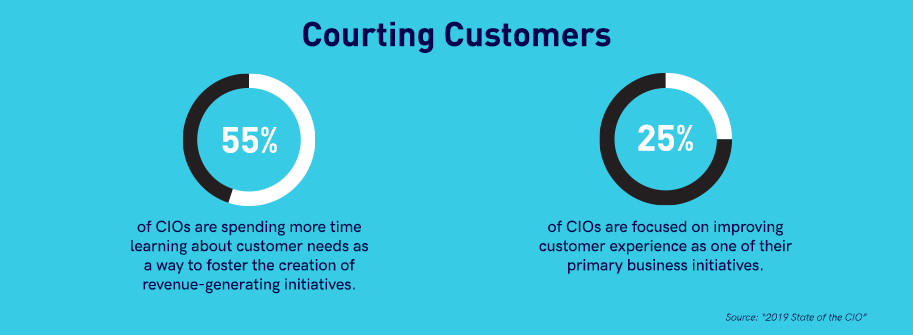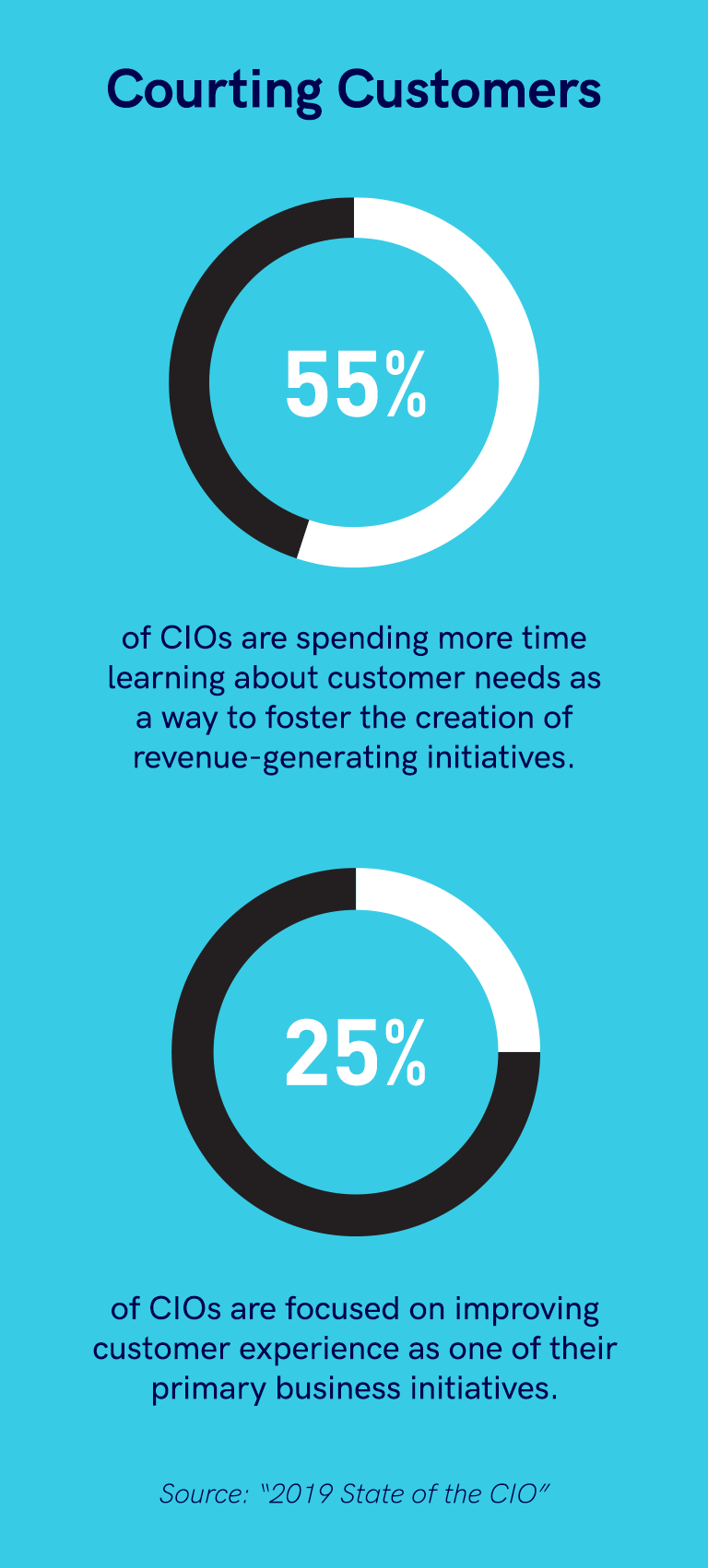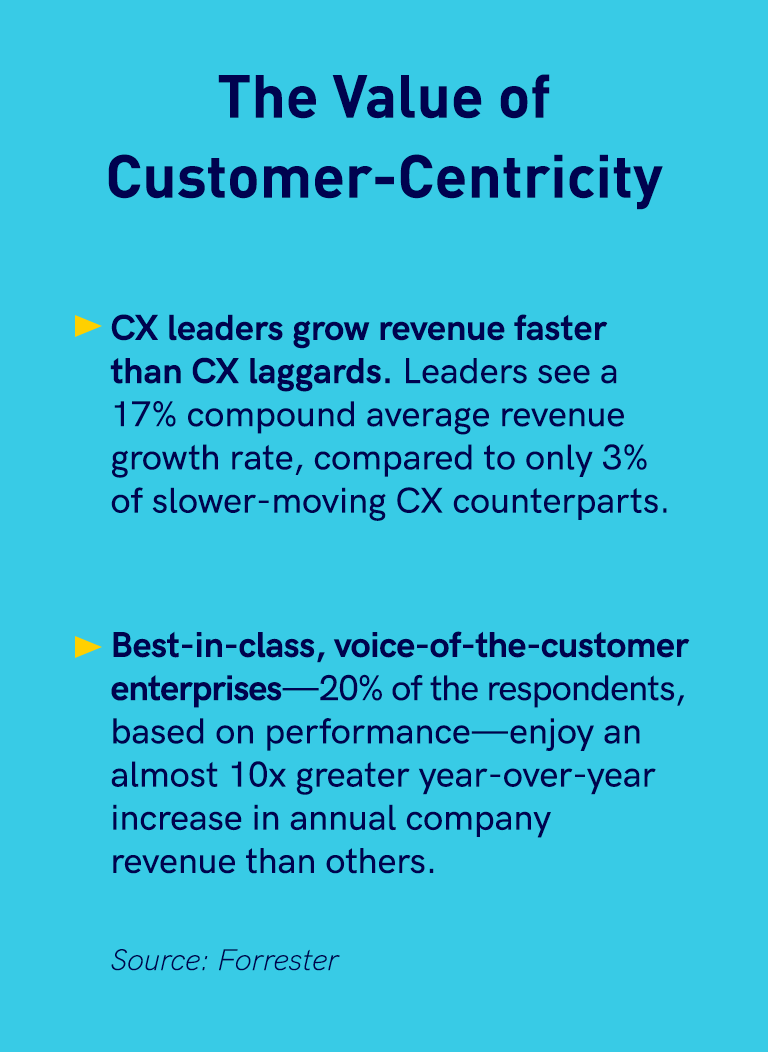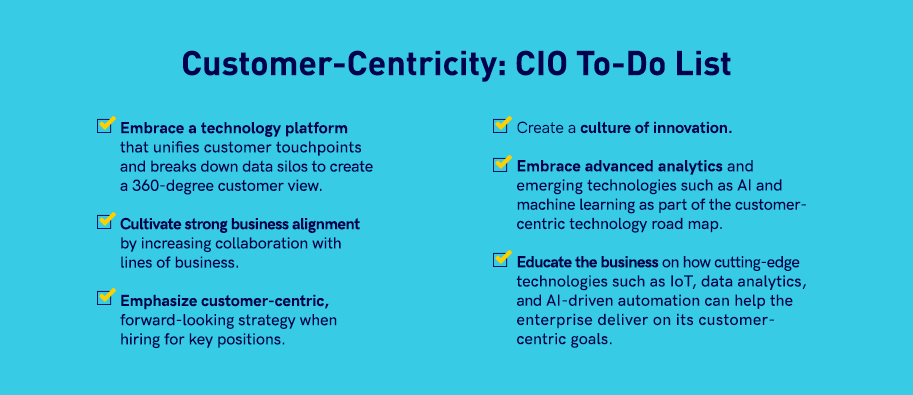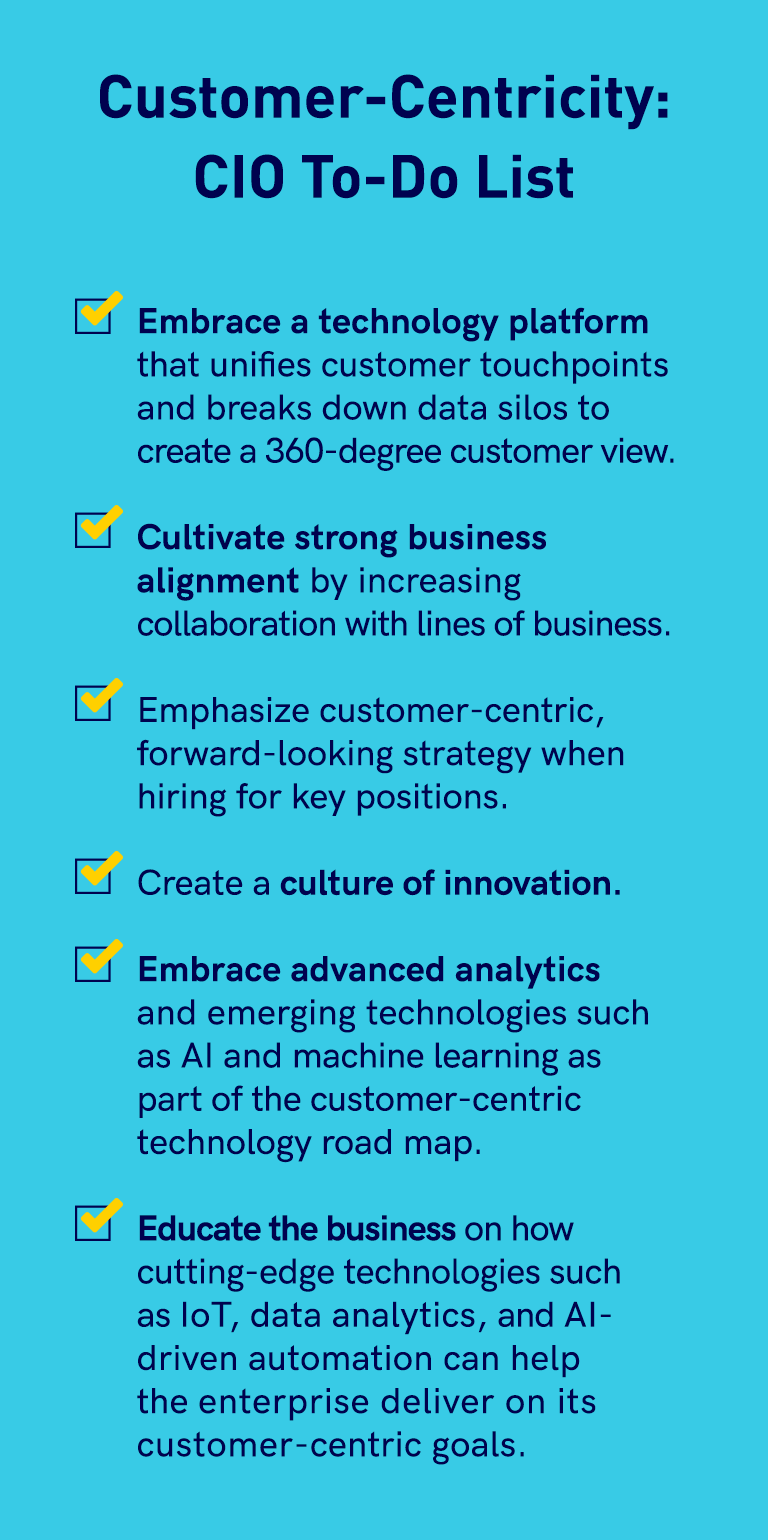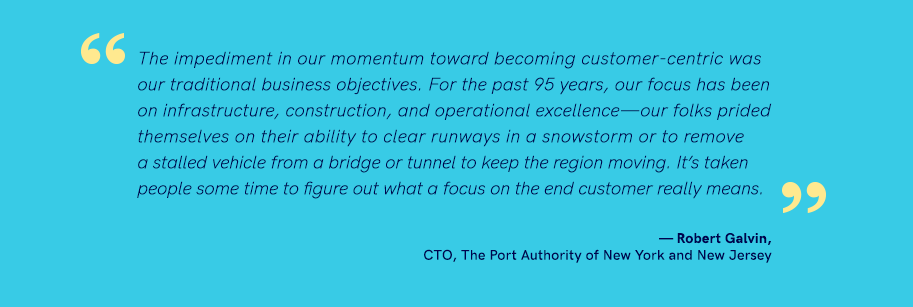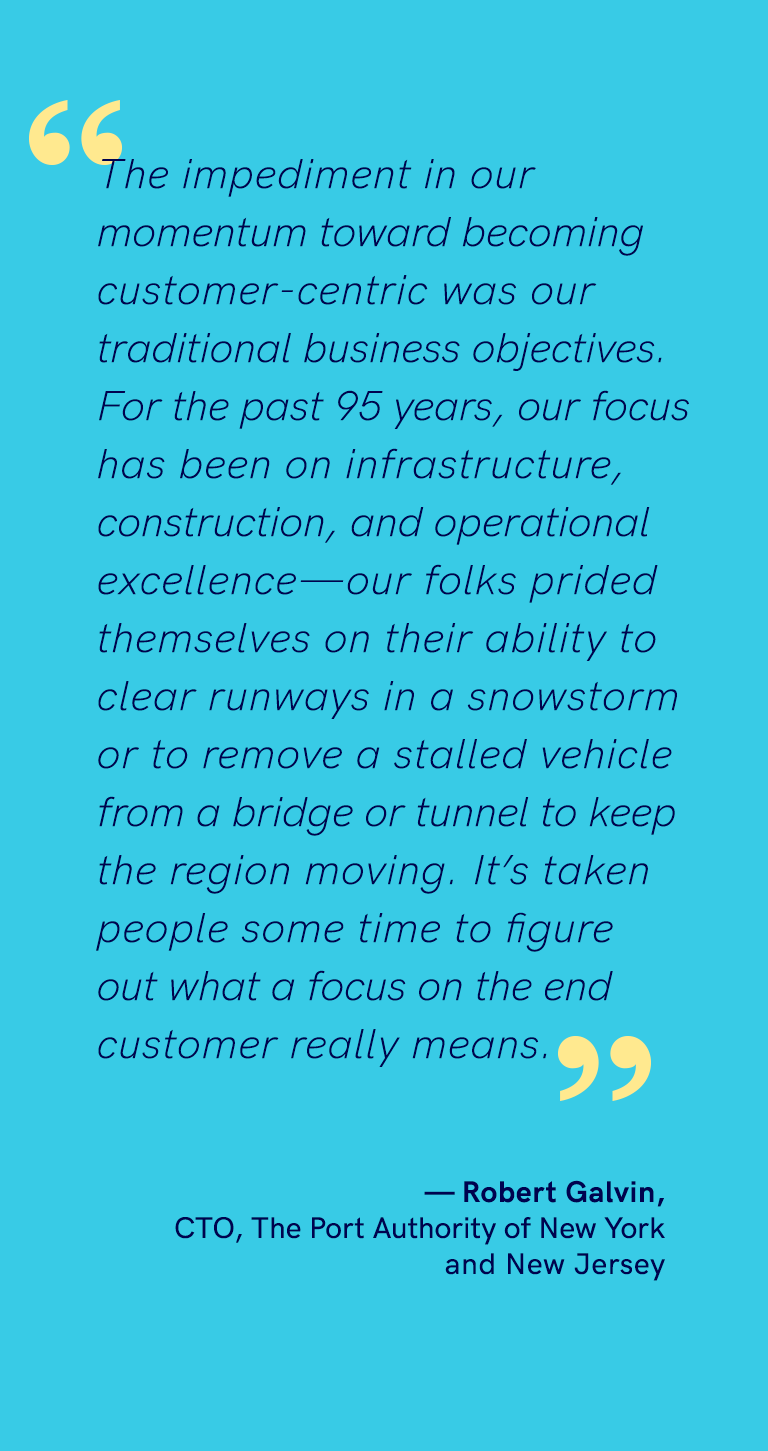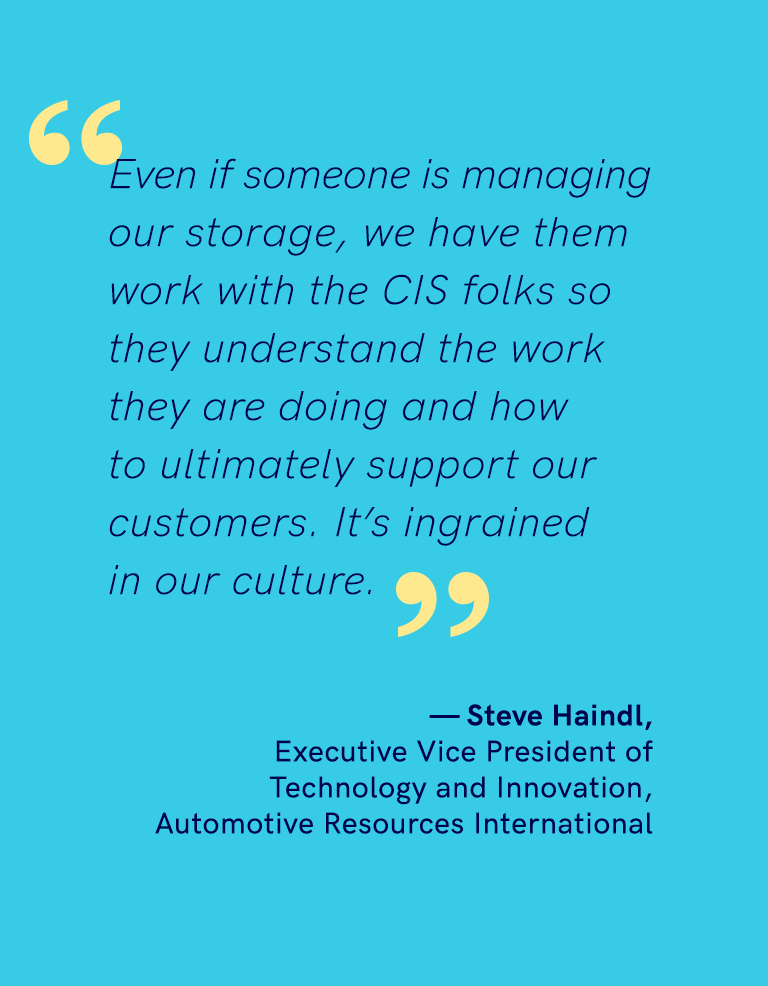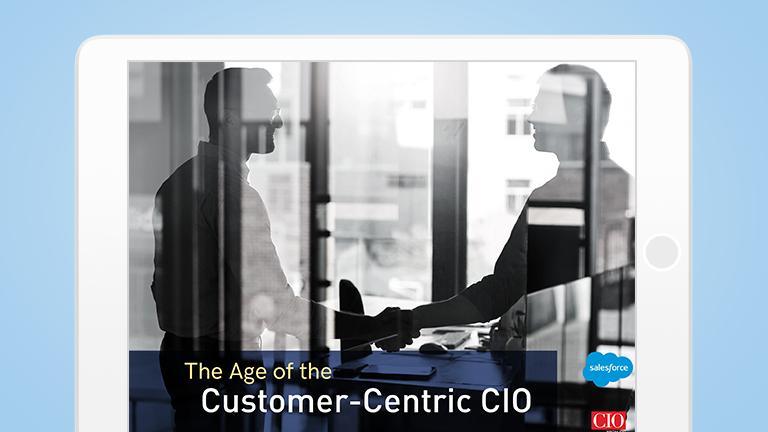The Age of the
Customer-Centric CIO


CIO.com delivers the latest tech news, analysis, how-to, blogs, and video for IT professionals.
Overview
In today’s Digital Age, companies that listen to their customers, are adept at solving those customers’ pain points, and deliver relevant and immersive experiences have the advantage. With customer-centricity rising to the top of the CEO agenda, the CIO is well positioned to lead the charge.
How can CIOs do this? By leveraging enterprise technology to create a 360-degree customer view that serves as the springboard for new products and services while increasing loyalty and engagement. CIOs who embrace this kind of customer mandate are shifting away from the narrow view of their tech leader role and instead balancing legacy IT responsibilities with a strategist-centered charter that uses technology to advance enterprise business objectives.
According to “2019 State of the CIO” research, 55% of CIOs are spending more time learning about customer needs as a way to foster the creation of revenue-generating initiatives. At the same time, a quarter of the CIOs responding to the survey are prioritizing improvements to customer experience as one of their primary business objectives.
CIOs are also doubling down on customer-centricity by engaging directly with external constituents, including customers, boards of directors, and partners. This firsthand accounting of all experiences with digital-based products and services will help them better understand the pain points and requirements. Customer-savvy CIOs are following up by transforming their internal IT organization to reflect this mind-set, emphasizing the importance of walking in the customers’ shoes, prioritizing nontechnical skill sets, and putting practices in place to foster greater synergy between IT and the business.
Customer-centric CIOs are also actively deploying state-of-the-art technologies such as artificial intelligence (AI) and advanced analytics. These innovations enable a deeper dive into critical insights that can help unleash new products and revenue streams and create more-productive interactions. These technologies also enable new levels of proactive and preventive service designed to keep customers content and engaged over a longer lifecycle.
Customer-Centricity: Today’s Business Mandate
Leading businesses have long operated under the premise that the customer is always right, but being customer-focused is not the same as thinking like a customer. Customer-focused organizations ask customers what they want and deliver based on a gathered set of requirements. Customer-centric organizations immerse themselves in the customer experience and synthesize data from multiple touchpoints to better understand wants and motivations, in turn creating solutions that customers don’t always know they need. These same companies know exactly who their key customers are, so they can cultivate a relationship that increases customer lifetime value. CIOs who can deliver the infrastructure and initiatives that enrich and support that lifetime relationship will drive competitive advantage for their organization while also securing a spot on the C-suite leadership team.
Why is customer-centricity so important today? The easy answer is that companies simply perform better when they put customer needs and experience at the epicenter of their business agenda. Take growth, for example. A Forrester study found that customer experience (CX) leaders outperformed their counterparts in revenue growth. Those companies with a customer-centric charter enjoyed a 17% compound average revenue growth rate (CAGR), compared to only 3% for those shops that were slower to steer toward a CX focus.
Customer experience has also become a hallmark of competitive advantage. Salesforce’s fifth annual “State of Marketing” report revealed that 68% of marketing leaders say their company increasingly competes on the basis of customer experience. Companies considered best-in-class, voice-of-the-customer (VOC) enterprises—about 20% of the total respondents to an Aberdeen study based on performance—enjoy an almost 10x greater year-over-year increase in annual company revenue than companies that are not as far along the curve in pursuit of CX best practices.
Increased profitability is another laudable benchmark for companies that are realigning processes, products, and services around the customer and the overall customer experience. According to research conducted in partnership between Aberdeen Group and SAP, companies with best-in-class CX management practices achieve year-over-year customer profit margin improvement on the order of 527% higher than their peers. These companies also knock it out of the park when it comes to revenue performance: The survey indicated that they achieve a 359% boost in revenue growth compared to those that aren’t pursuing a similar customer-centric journey.
What’s driving the strategic shift toward customer-centricity? Many times it’s the customers themselves. Today’s consumers are far more knowledgeable and discerning, with higher expectations for what they want and how it’s delivered than ever before. Consumerization of technology has also raised the bar as consumers, used to the seamless experiences offered by Apple and Amazon in their daily lives, expect the same frictionless engagement for all their goods and services without regard to cost.
Challenges Lie Ahead
The stakes surrounding delivery of a robust and well-received customer experience couldn’t be any higher: By 2020 half of digital transformation initiatives will fail, due to the lack of an end-to-end customer experience operating system, according to IDC.
Although enterprises clearly have customer-centricity in their sights, a multitude of issues is preventing them from achieving a holistic customer view that can help drive business strategy.
One of the biggest obstacles is the current sprawl of siloed IT systems at most organizations. Companies, either by design or due to merger-and-acquisition activity, typically have collections of standalone systems and disparate information sources that limit visibility and keep the different functions and departments operating in their own bubbles. The result is myriad customer relationship management (CRM) systems and databases that cater to the specific needs of one department—Customer Service, for example, or Sales—without providing a holistic picture of the customer that can serve the greater enterprise.
The rise of shadow IT is another major hurdle impeding the elusive 360-degree customer view. There are also cost and performance pressures that keep companies from embarking on the transformation of legacy systems and infrastructure—the old “if it ain’t broke, don’t fix it” mentality, which holds a lot of companies back from a major systems overhaul.
Limited IT resources, coupled with the pressure to uphold traditional IT and operational responsibilities, have curtailed CIOs’ ability to focus on innovation and customer-centric digital transformation. That was the case for The Port Authority of New York and New Jersey—the organization responsible for all the major transportation infrastructure in the metropolitan New York area, including bridges, tunnels, and two major airports—according to Robert Galvin, the entity’s chief technology officer.
“The impediment in our momentum toward becoming customer-centric was our traditional business objectives,” Galvin says. “For the past 95 years, our focus has been on infrastructure, construction, and operational excellence—our folks prided themselves on their ability to clear runways in a snowstorm or to remove a stalled vehicle from a bridge or tunnel to keep the region moving. It’s taken people some time to figure out what a focus on the end customer really means.”
CIO’s Customer-Centric To-Do List
Like Galvin, it appears, CIOs have their work cut out for them to steer the ship toward customer-centricity. One of the most important moves will be to embrace a technology platform capable of unifying customer touchpoints and breaking down information silos. Such a platform needs to support a unified customer view, so that the various business stakeholders, whether they are field service engineers or marketing specialists, can access information and data-driven insights that are pertinent to their role and day-to-day responsibilities. The platform should also provide analytics, dashboards, and automation tools to help ease IT support and streamline manageability.
As CIOs evaluate the foundational technology platform, they should keep emerging technologies such as advanced analytics and AI/machine learning capabilities front and center. CIOs are well positioned to serve as the advocate for such cutting-edge technologies, educating their business counterparts and making the case to them on how capabilities such as the Internet of Things (IoT), data analytics, and IT-driven automation can help organizations deliver on their customer-focused goals.
In addition to championing the technology transformation, CIOs also need to play an active role in building or changing culture. Organizations that are most successful at a customer-centric agenda embrace much higher levels of business/IT alignment and place an emphasis on collaboration. Similarly, IT shops that are organized around a culture of innovation are far better equipped to understand customer pain points and immersion into the overall experience, unlike those that remain wedded to the traditional IT focus on technology deployment.
Automotive Resources International, a division of Holman Enterprises, uses several tactics to keep its eye on customer needs and desires. These tools include a 360 Degree Customer View platform, a dedicated customer information systems (CIS) team, and a customer advisory board.
“Even if someone is managing our storage, we have them work with the CIS folks so they understand the work they are doing and how to ultimately support our customers,” says Steve Haindl, executive vice president of technology and innovation at Automotive Resources International. “It’s ingrained in our culture.”
The Age of the Customer-Centric CIO
overview
Chapter 1
Chapter 2
Chapter 3
Chapter 4
Chapter 5
Want to read the full report?
Questions? We’ll put you on the right path.


